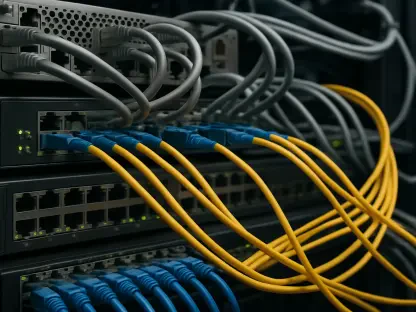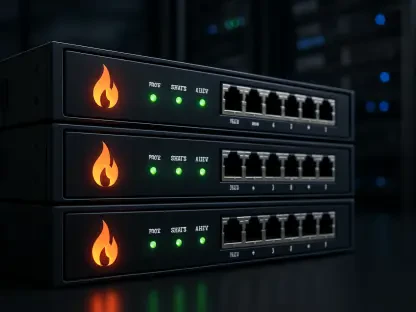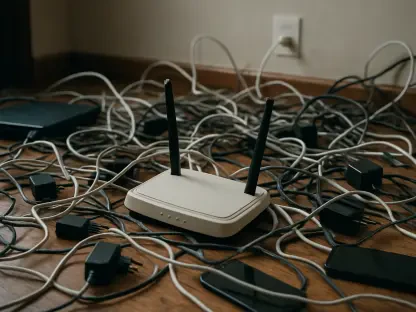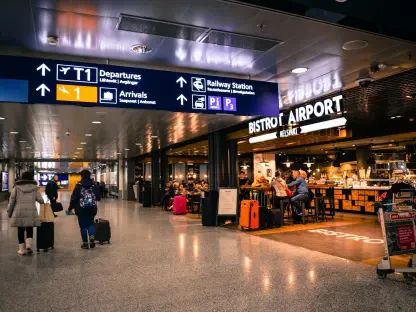United Airlines recently faced a complex challenge that temporarily halted progress on an ambitious project: implementing SpaceX’s Starlink Wi-Fi on its fleet. The project’s objective is to enhance onboard connectivity, promising high-speed internet for passengers. However, the integration encountered technical issues that could not be overlooked. The initial problem emerged from Starlink’s satellite-based Wi-Fi, which led to interference with pilots’ communication systems. This specific issue arose from static interference occurring immediately after radio transmissions, affecting VHF radios used by pilots to communicate with air traffic control. Although the airline assured no risk to safety, precautionary measures prompted a suspension of the service while solutions were sought.
Identifying and Addressing the Interference Issue
Nature of the Interference
The specific nature of the interference with United Airlines’ implementation of Starlink Wi-Fi involved radio communications and static disruption. Pilots experienced noticeable static interference right after radio communication attempts on aircraft fitted with new Starlink antennas. This unexpected interaction had potential safety implications as it affected the clarity of crucial communications between pilots and air traffic control. Recognizing the potential for disruption, United Airlines took decisive action to pause the Starlink Wi-Fi implementation temporarily. This pause allowed them to address the interference issue with detailed attention and deliberate care, even though flight safety was reportedly uncompromised.
Efforts to Resolve the Problem
United Airlines quickly began working with SpaceX to tackle the source of the interference that caused the static disruptions. Engineers from both companies collaborated to identify technical modifications needed to eliminate or significantly reduce the interference problem. The resolution strategy involved deploying hardware and firmware updates specifically designed to address the identified communication disturbances. Notably, United Airlines succeeded in applying the solution to one-third of the affected aircraft, effectively restoring Wi-Fi services on those planes. This progress underscored the company’s adeptness at overcoming technical hurdles, promising continuity in the integration of Starlink Wi-Fi services across the fleet without further complications.
Future Prospects for United’s Onboard Connectivity
Strategic Plan for Fleet Modernization
United Airlines’ commitment to modernizing its onboard connectivity systems extends beyond the current pause in Starlink Wi-Fi implementation. Aiming to provide consistent, high-speed internet access throughout its fleet, the airline plans to expand Starlink Wi-Fi to additional Embraer E175 and Bombardier CRJ-550 jets. The ultimate goal is to retrofit the entire United Express regional fleet with Starlink capabilities by the end of this year. Through strategically scheduled maintenance, the company minimizes disruptions to flight schedules and avoids cancellations. The endeavor reflects a broader strategy to offer passengers a seamless and modern onboard experience that aligns with the growing expectations of today’s air travelers.
Enhancing the Passenger Experience
For passengers expecting reliable connectivity, especially at major hubs like Chicago O’Hare and Denver, the temporary disruption might seem inconvenient. However, the long-term vision of United Airlines promises substantial improvements over current systems, which have often faced criticism for lackluster performance. By integrating Starlink’s satellite-dependent Wi-Fi, United aims to revolutionize the quality of in-flight internet service, making it accessible for free through a simple connection requiring a MileagePlus account. This initiative represents an evolution in how passengers interact with onboard services, enhancing the overall travel experience while setting a new standard for in-flight connectivity across the airline industry.
Balancing Innovation and Reliability
Maintaining Steady Progress
The temporary suspension of Starlink Wi-Fi onboard United’s regional jets underscores the importance of balancing innovation with operational reliability. While technical challenges are a natural part of integrating advanced systems, United Airlines’ rapid response and focus on resolution kept its broader connectivity goals on track. By prioritizing a quick resolution to technical hurdles, the airline demonstrates adaptability and commitment to technological advancement that meets customer demand. This strategic approach ensures not just a successful rollout of Starlink Wi-Fi but also reinforces United’s role as a leader in airline technology innovations, ready to meet the evolving needs of its passengers without compromising safety or reliability.
Commitment to Onboard Excellence
United Airlines recently encountered a significant hurdle in their efforts to advance a cutting-edge initiative: equipping their airplanes with SpaceX’s Starlink Wi-Fi. The goal of this project was to provide passengers with high-speed internet, revolutionizing in-flight connectivity. However, the implementation met with technical difficulties that could not be ignored. The primary issue stemmed from Starlink’s satellite-based Wi-Fi system, which caused interference with the communication systems used by pilots. Specifically, the problem was related to static interference that occurred immediately following radio transmissions, affecting the VHF radios that pilots rely on for critical communications with air traffic control. Although the airline emphasized that there was no threat to passenger safety, they opted to suspend the service as a precautionary measure while seeking solutions. This deliberate pause underscored their commitment to ensuring that all technological integrations meet stringent safety standards.









